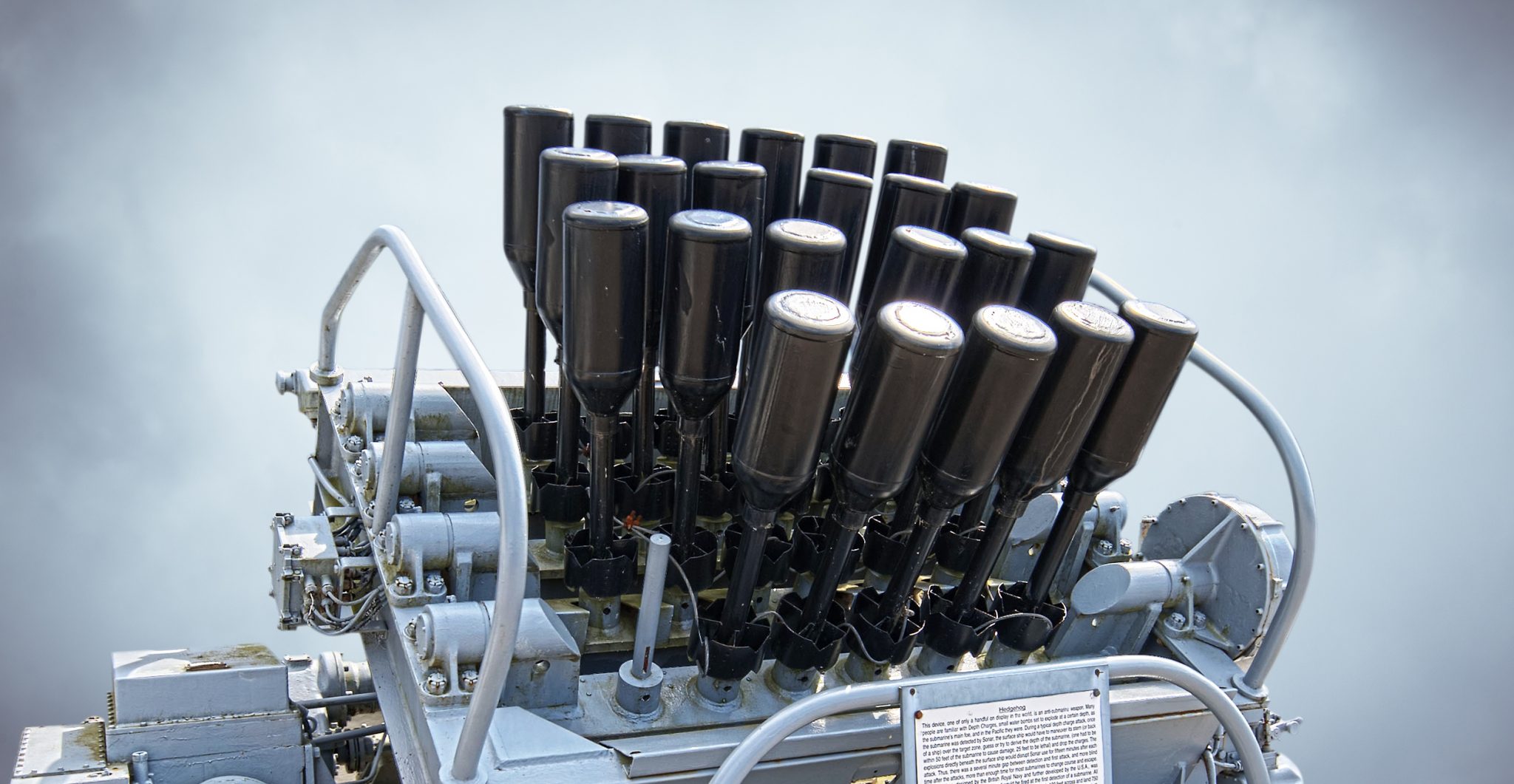During the Second World War, Britain’s Special Operations Executive (SOE) employed a group of eccentric and gifted inventors to create innovative weapons. Mostly designed for sabotage operations, these included some unique and influential devices.
Sticky Bomb
Created during the dark days of 1940, when it looked like Nazis might cross the Channel, the sticky bomb was invented to fight back against invading tanks.
It consisted of a glass flask of nitroglycerine, wrapped in a sleeve and coated with a thick glue specially invented by the chief chemist at a Stockport chemical plant. This was all attached to a non-sticky handle.
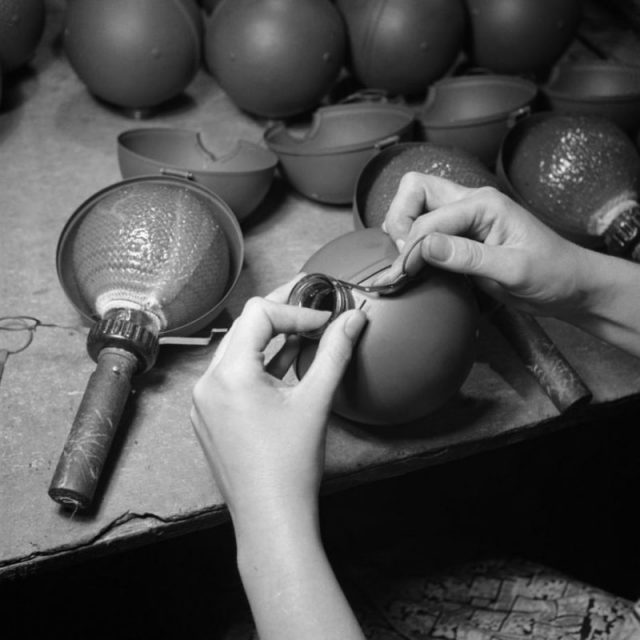
When thrown at a tank, the bomb would stick and the glass would shatter. Held together by the sleeve, the nitroglycerine fused to the tank before exploding. The inward-focused blast filled the interior of the tank with deadly shrapnel.
The sticky bomb was used to great effect by both SOE guerillas and regular troops in the US Army. It was also the weapon that brought a special sort of fame to the SOE research team at their facility, the Firs.
Though knowledge of their work was a secret kept by Britain’s top military planners, the Firs gained a reputation for lethal ingenuity among those men who knew of them.
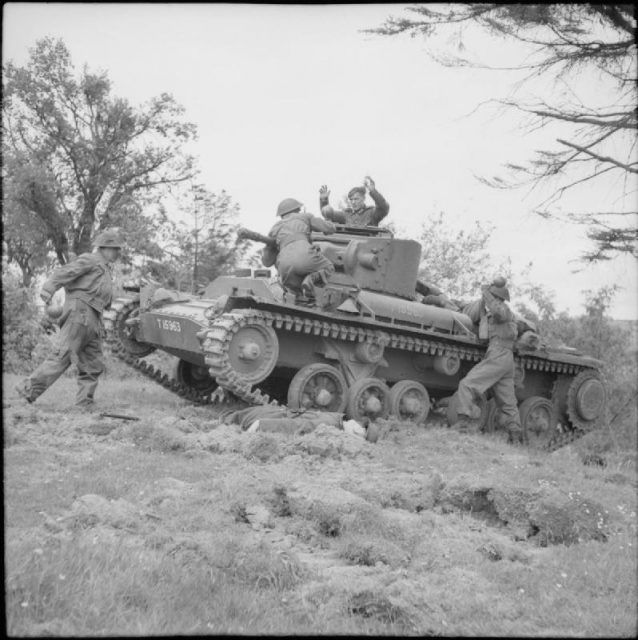
Blacker’s Bombard
When Stewart Blacker turned up on their doorstep with a mysterious package, SOE staff were rightly cautious. A monocled veteran and self-styled freelance inventor of experimental weapons, Blacker was a curious figure. But the weapon he brought proved incredibly effective.
Blacker’s bombard was a form of spigot mortar. The projectile was mounted on a tube which fired with it, forming a primitive missile.
The bombard was potentially deadly against tanks but had been turned down repeatedly by the Ordnance Board due to its strange appearance and various flaws.
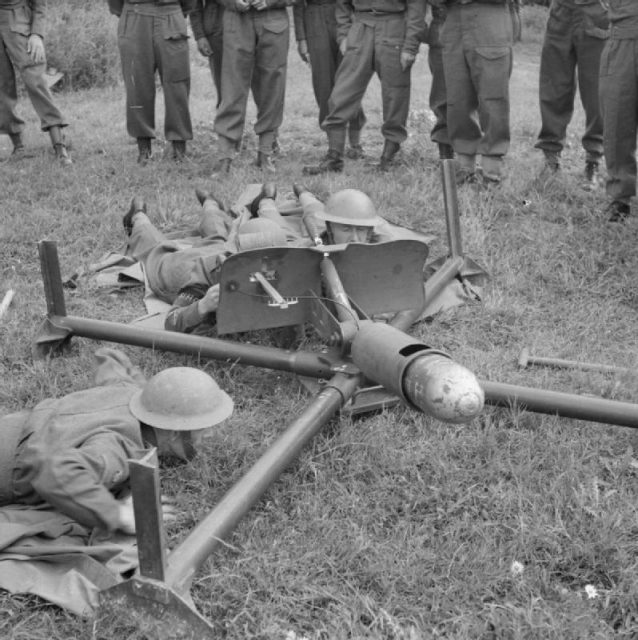
With help from Millis Jefferis, the bombard was turned into an effective weapon. A demonstration was arranged for the Prime Minister, Winston Churchill, in his garden at Chequers. The first shot almost hit Free French leader, General de Gaulle, before destroying a tree.
The demonstration convinced Churchill that it should be commissioned.
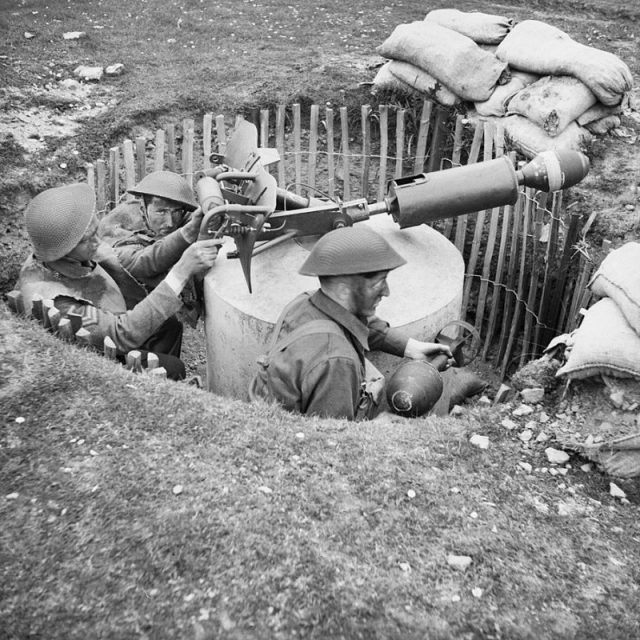
Hedgehog
An eccentric lecturer in thermodynamics, Charles Goodeve was among the scientists brought to visit the Firs. He had been considering a weapon to fire depth charges against enemy submarines, but it was once he got talking with Jefferis that they hit on a novel solution.
The Hedgehog was a cluster of spigot mortars, firing from a single launchpad. Mathematical calculations were used to set their course. They would hurtle up into the air before plummeting into the water in a set pattern. Correctly targeted, the mortar rounds would cluster together as they hit the target submarine.
The Hedgehog lived up to its promise, being used to deadly effect against Japanese submarines in the Pacific.
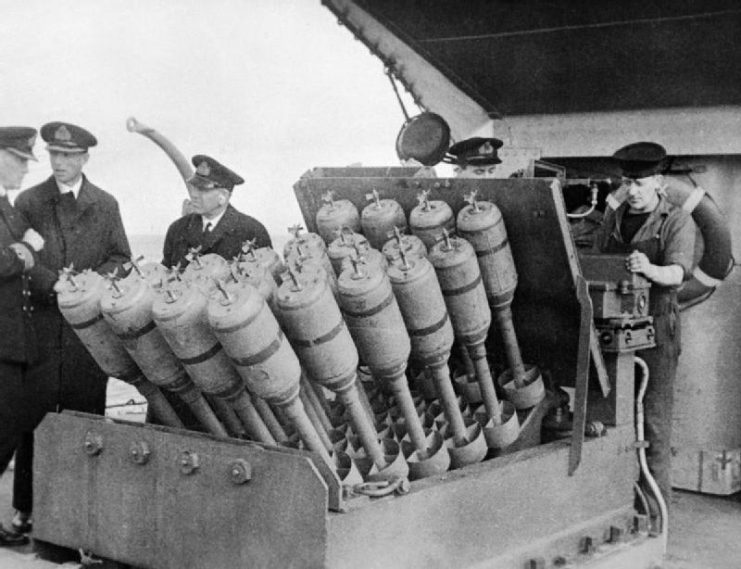
Limpet Mine
Created by a magazine editor named Stuart Macrae and a caravan-maker named Cecil Clarke, the limpet mine made Clarke and Macrae central figures at the Firs.
The limpet was a magnetized mine designed to be attached to the hulls of ships beneath the water. However, it soon found use in other operations, particularly sabotaging factories.
The device had to be light enough to be carried by a swimmer, magnetic enough to stay on a hull underwater, and triggered by a reliable timed detonator.
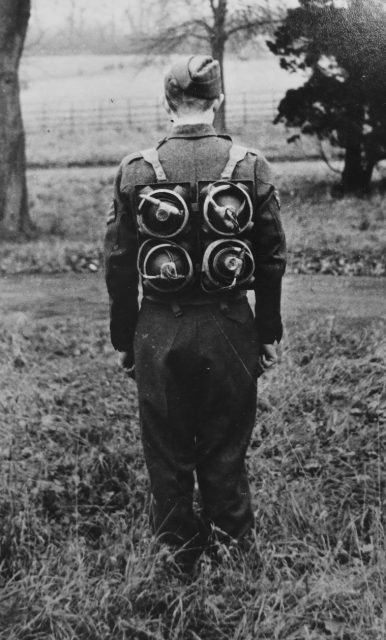
Macrae and Clarke’s prototype was produced using a tin mixing bowl, high-grade magnets, candy that would dissolve to release the trigger, and a condom to stop the candy dissolving before the mine was placed. Based on this prototype, hundreds of limpet mines were ordered.
Limpets were used in countless successful sabotage missions, most famously the raid on Bordeaux immortalized in the film The Cockleshell Heroes.
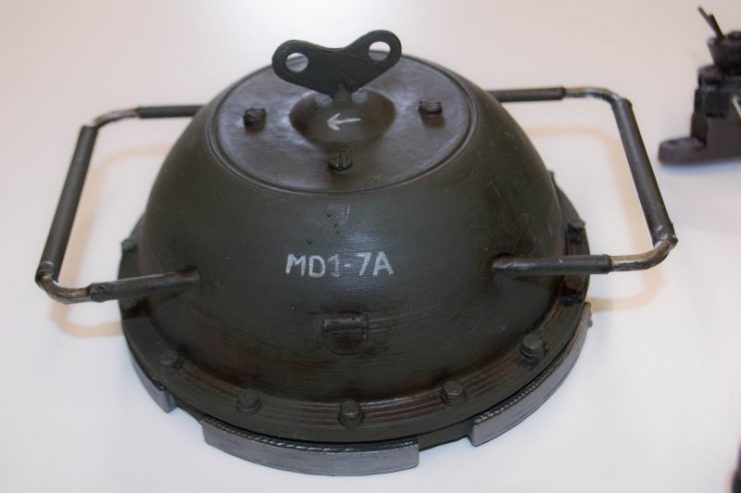
A Specialist Grenade
One of Clarke’s creations killed the Nazi governor of Czechoslovakia who was the architect of the Holocaust, brutal SS commander, Reinhard Heydrich.
The assassination was carefully planned by SOE and Czech exiles. Long before the assassins were dropped into the country, a plan was made for how to kill Heydrich, involving an attack while he traveled in his car.
A grenade would be the most effective way to kill him, but a standard grenade would not be able to puncture the armor-plated vehicle, while an anti-tank grenade would be too heavy to throw across the road at the ambush point.
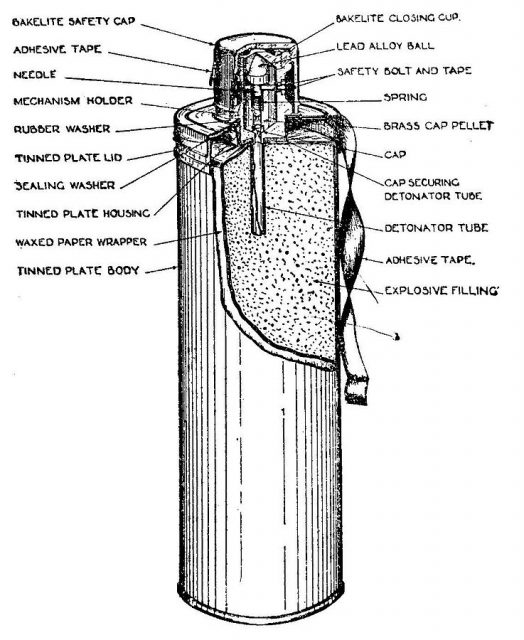
Clarke created a unique, low-weight, streamlined grenade packed with nitroglycerine. It was designed to force shrapnel through the car and through Heydrich with incredible force.
The attack took place on May 27, 1942. Heydrich was not killed in the initial attack, but the grenade ruptured his diaphragm, broke a rib, and pierced his spleen with shrapnel. He died eight days later of septicemia.
Though there is no confirming evidence, Clarke later implied that he had included a biological agent in the grenade to ensure Heydrich’s demise.
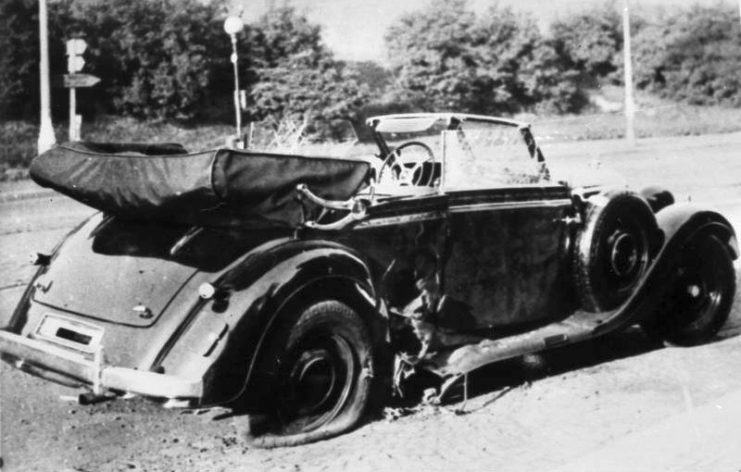
Armor Piercing Ammo
Some weapons were designed for the army as well as covert operations. Based on the work of American chemist Charles Munroe, Millis Jefferis and James Tuck created a specialist armor-piercing projectile.
A hollow cone of explosives lined with metal, it melted the metal on impact, creating a lethal plug that went straight through armor. This became the Projector Infantry Anti-Tank, or PIAT, a shoulder-mounted weapon used to great effect by Allied infantry against enemy tanks.
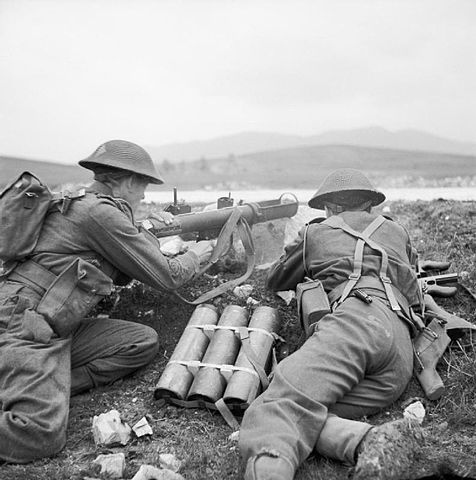
Aero-Switch
Clarke was also responsible for the aero-switch. This was a sausage-shaped explosive charge incorporating a small metal bellows. At high altitudes, low atmospheric pressure caused the bellows to expand, connecting the wires that set off the explosives.
The aero-switch was used by saboteurs against German planes, especially bombers.
Read another story from us: Soviet “Atomic Annie” – The 2B1 “Oka” Nuclear Mortar
A saboteur could approach a plane in the darkness of the night, cut a slit in the wing fabric, and slip the aero-switch inside. Next time the plane flew, the bomb would explode when it reached high altitude.
On at least one occasion, a whole bomber fleet was grounded while crews searched for these devices.
